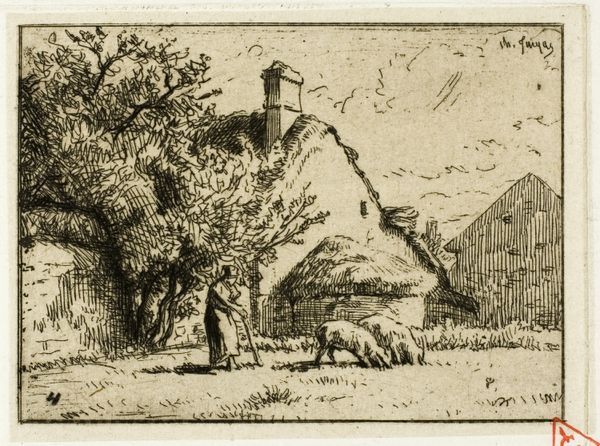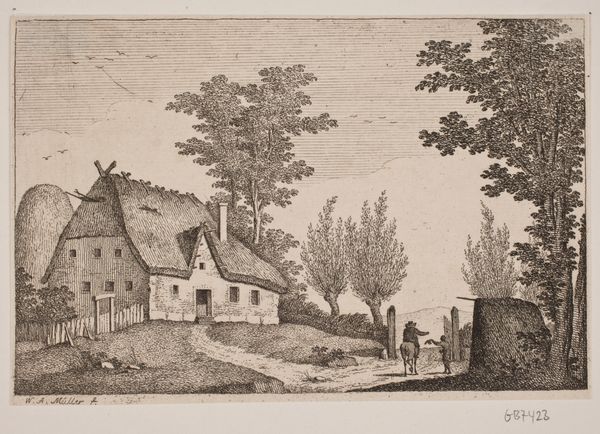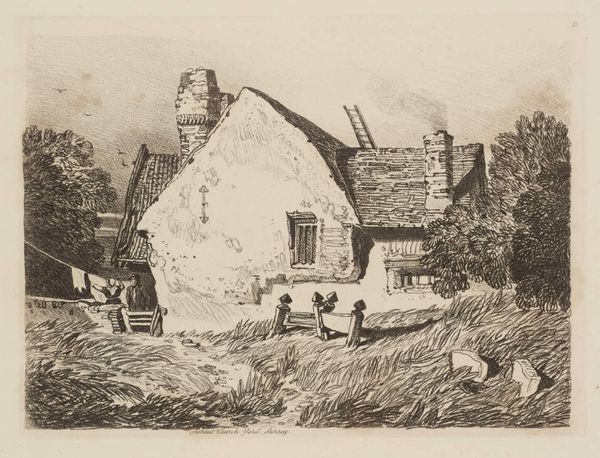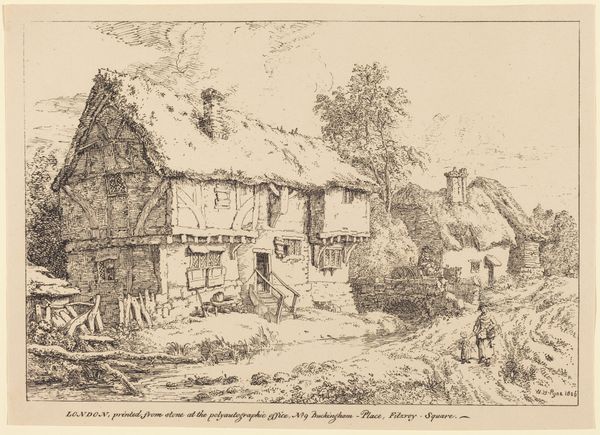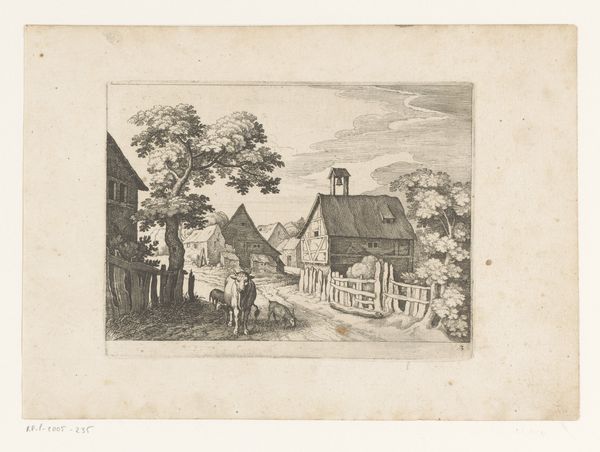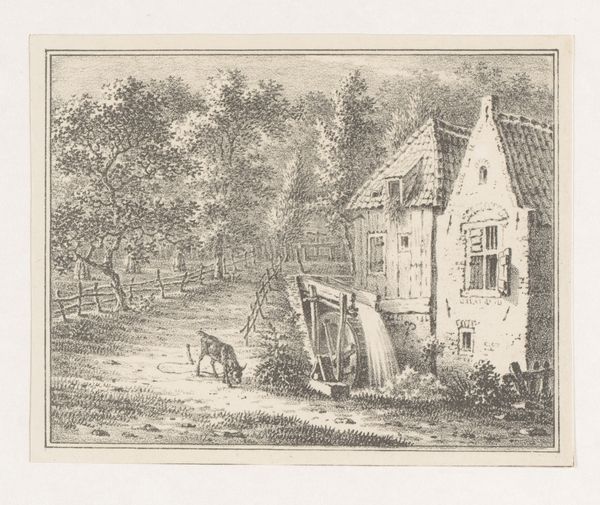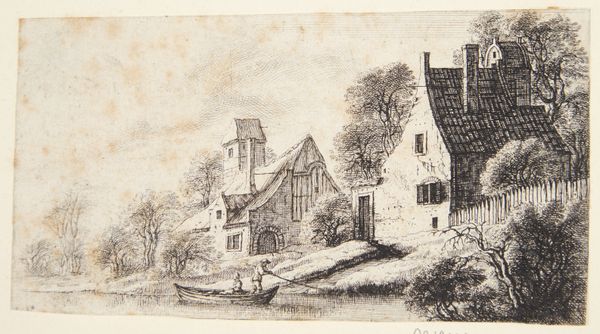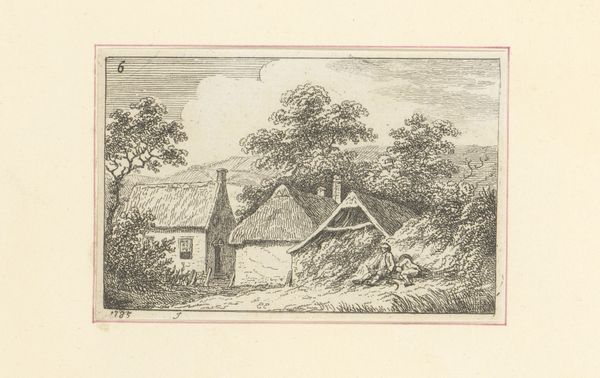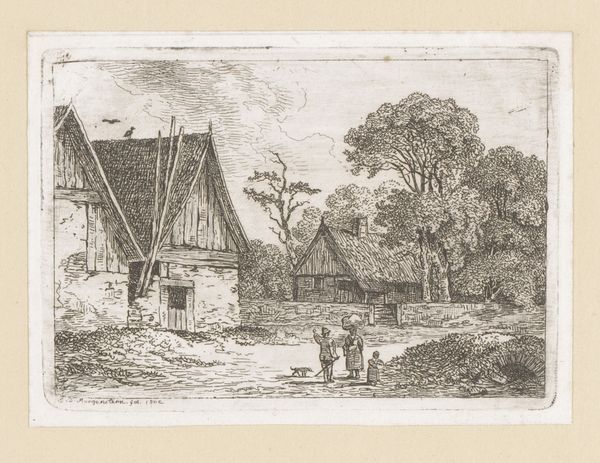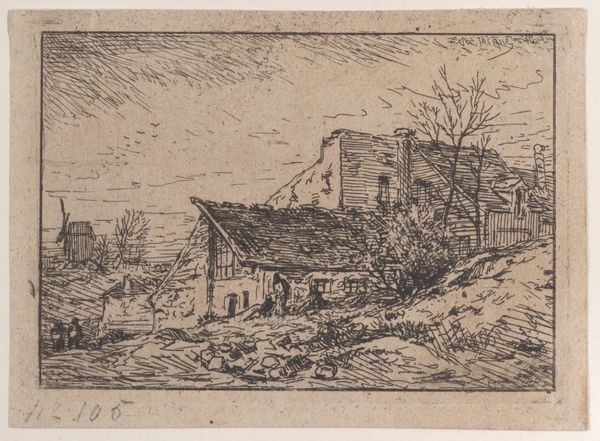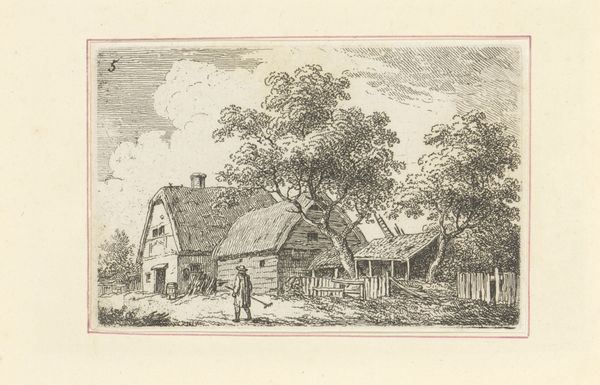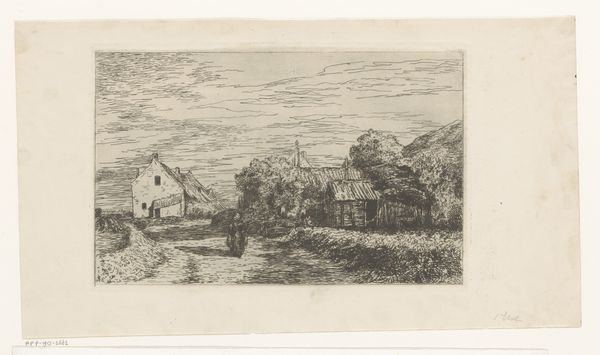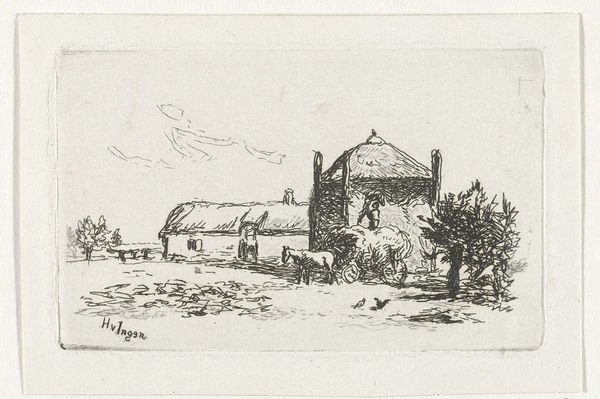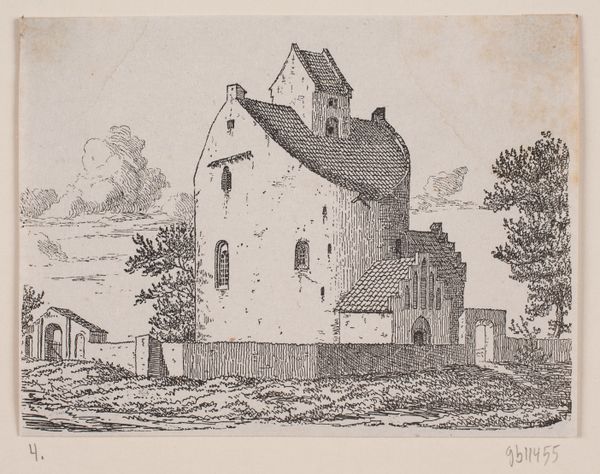
drawing, print, etching, ink, engraving
#
drawing
# print
#
etching
#
landscape
#
figuration
#
ink
#
engraving
Copyright: National Gallery of Art: CC0 1.0
Curator: Let's turn our attention to this charming etching entitled "The Farmyard." Emmanuel Phelippes-Beaulieu created it in 1859, utilizing ink and engraving techniques. Editor: My first impression is one of quiet labor. The detail is astounding for its size, creating a miniature world filled with understated industry and everyday activity. Curator: Indeed. Phelippes-Beaulieu was depicting the socio-economic landscape of rural France, showcasing the lives and activities of those who worked the land during that era. The figure carrying a heavy load, the stacked barrels – these are all representative of agrarian life. Editor: Absolutely. But there's more here. Look at the positioning of the figures, almost dwarfed by the architecture. Consider also the woman under the arched building--who is she, and where might she be headed? What commentary could Phelippes-Beaulieu be making about class and visibility through the visual power dynamics and structural hierarchy on display? Curator: I think it's vital to see this work within the broader political landscape of France in the mid-19th century. We must remember the complex relationships between urban centers and the countryside during that time. This work captures something of that tension. The detailed portrayal also speaks to an academic understanding of art institutions that legitimized certain visions of labour in art as subjects worthy of art's patronage. Editor: I agree there's certainly a socio-political dimension to the art. It presents an interesting tension—celebrating rural labour while simultaneously hinting at the isolation or perhaps even marginalization of these people, emphasizing a class structure rooted in land ownership. I see a statement about the universal experience of working-class individuals across Europe and the power dynamics at play in everyday life, rather than one necessarily bound to its local context. Curator: I see your point. The print provides some evidence of his engagement with landscape painting but in that genre it would appear he was attempting something different in relation to class, labor, and rural power structures. Editor: Yes, and I find it valuable that we have this visual document that continues to encourage these multifaceted dialogues. Curator: Agreed, its power resonates beyond the depicted reality.
Comments
No comments
Be the first to comment and join the conversation on the ultimate creative platform.
